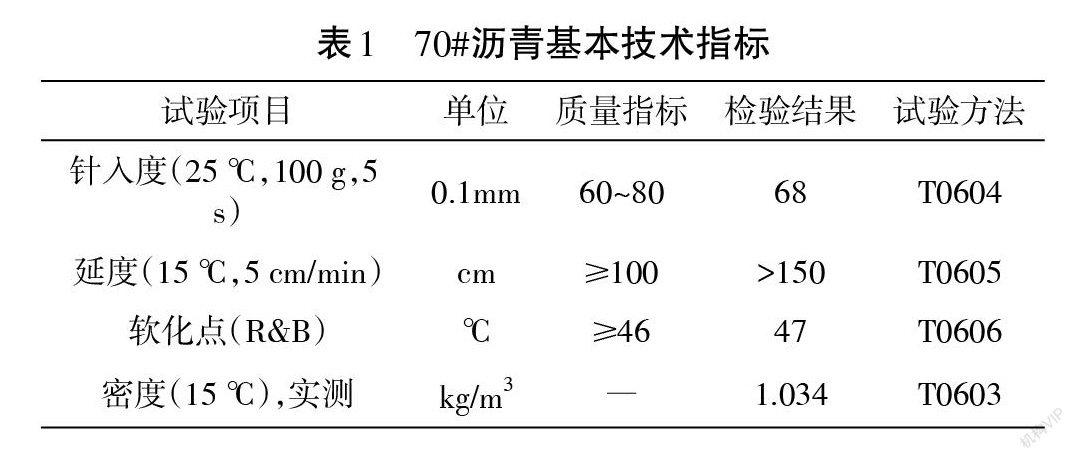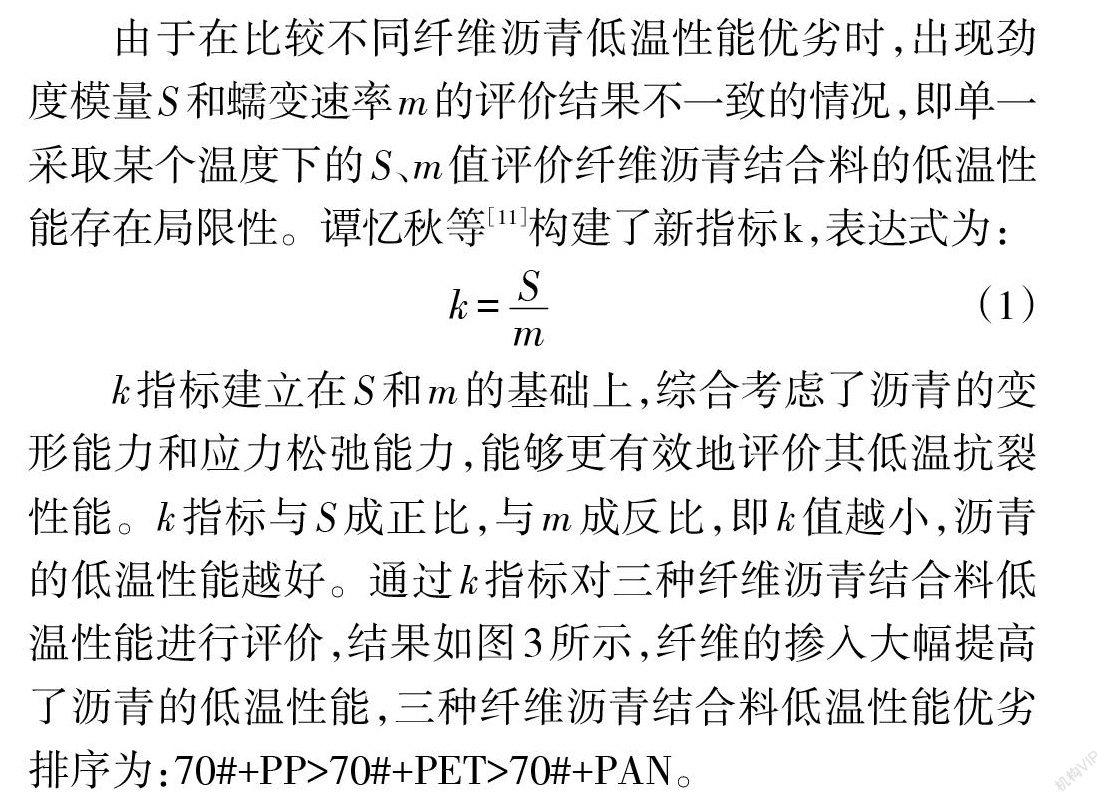基于BBR试验的纤维沥青结合料低温性能研究
2021-09-26刘安陈鹏飞
刘安 陈鹏飞



摘 要:为了研究纤维对沥青低温性能的影响,本文选用了三种常用的路用纤维以不同掺量进行纤维沥青结合料的制备,通过-12℃以下的BBR试验得到了聚丙烯纤维、聚酯纤维和聚丙烯腈纤维沥青结合料的劲度模量S和蠕变速率m等低温指标。结果表明:聚丙烯纤维、聚酯纤维及聚丙烯腈纤维的最佳掺量分别为3%、3%和4%,并且在此掺量下,聚丙烯纤维对沥青低温性能的改善效果最好,其次是聚酯纤维,聚丙烯腈纤维最差。
关键词:纤维沥青结合料;BBR试验;低温性能
中图分类号:U414 文献标识码:A 文章编号:1003-5168(2021)24-0076-03
Study on Low Temperature Performance of Fibrous Asphalt Binder Based on BBR Test
LIU An CHEN Pengfei
(North China University of Water Resources and Electric Power, Zhengzhou Henan 450045)
Abstract:In order to study the influence of the low temperature performance of asphalt, three commonly used in road fibers were selected in this paper to prepare fiber asphalt binder with different dosage. Through the BBR test below -12℃, the low temperature indexes such as stiffness modulus S and creep rate M of the asphalt binder of polypropylene fiber, polyester fiber and polyacrylonitrile fiber were obtained. The results show that the optimal content of polypropylene fiber, polyester fiber and polyacrylonitrile fiber is 3%, 3% and 4%, respectively, and polypropylene fiber has the best improvement effect on the low temperature performance of asphalt in this content , the second is polyester fiber, and the worst is polyacrylonitrile fiber.
Keywords: fibrous asphalt binder; BBR test; the low temperature performance
隨着我国交通建设的飞速发展,沥青路面的低温开裂病害也越来越常见。路面开裂的原因主要是在低温下沥青黏结料变脆变硬,应力松弛能力下降,在温度和行车荷载的双重作用下出现拉应力超过沥青混凝土的极限抗拉强度而发生开裂[1,2]。纤维作为一种高强、耐久、质轻的增强材料,能显著改善沥青路面的力学性能,但纤维种类繁多,性能各异,对沥青的作用效果也不尽相同[3,4]。目前评价沥青或沥青结合料低温性能的方法有很多种,其中美国SHRP计划中的BBR试验与混合料的路用低温性能关联性较高[5,6]。本文选用聚丙烯纤维、聚酯纤维和聚丙烯腈纤维分别以不同添加比例掺入到沥青中,并进行BBR试验,对比分析了不同纤维沥青结合料低温性能的差异,为纤维在寒冷地区的路面工程应用提供一定的理论参考。
1 试验材料与试验方法
1.1 原材料
本文选用中石油昆仑70#基质沥青,其主要技术指标见表1,选用聚丙烯纤维、聚酯纤维和聚丙烯腈纤维。将本文涉及的纤维代号作统一说明:聚丙烯纤维、聚酯纤维和聚丙烯腈纤维分别简写为PP、PET和PAN(下同)。
1.2 纤维沥青结合料的制备
准备3份均为500 g的基质沥青样品,置于160 ℃的烘箱中加热融化,纤维用坩埚盛放并置于105 ℃的烘箱中加热至恒重,然后分别将掺量为1%、2%、3%和4%的纤维添加到沥青中,采用机械搅拌机进行搅拌,转速为1 500 r/min,搅拌时间为不少于30 min,搅拌过程中以160±5 ℃持续加热[4]。将制备好的纤维沥青结合料按照规范要求进行BBR试验。
1.3 BBR试验
采用CANNON在-12 ℃下对70#基质沥青和三种纤维沥青结合料进行240 s的恒定加载试验,试验会给出第8 s、15 s、30 s、60 s、120 s及240 s等6个时间点的劲度模量S和蠕变速率m,根据规范要求,一般取第60 s的S和m值作为沥青的低温评价指标[7,8]。
2 试验结果与分析
2.1 劲度模量S和蠕变速率m
通过BBR试验,在不同纤维掺量下,沥青的劲度模量和蠕变速率均发生改变,具体如图1所示。研究表明,劲度模量S和蠕变速率m分别表征了沥青的变形能力和应力松弛能力,S越小,m越大,则沥青低温性能越好[9-10]。由图1可知,随着纤维掺量的增加,沥青的劲度模量S逐渐降低,蠕变速率m则呈上升趋势;PP、PET及PAN的掺量在3%、3%和4%时,沥青的劲度模量S最小、蠕变速率m最大,说明此刻的低温性能最好。
